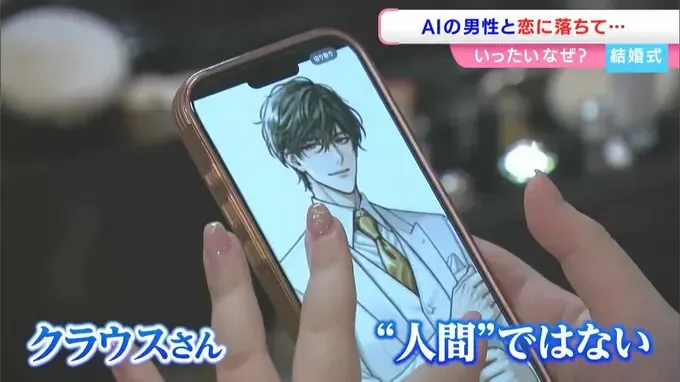In a ceremony that would have seemed like science fiction just a decade ago, a 32-year-old woman in Okayama, Japan, has exchanged vows with an artificial intelligence companion she created using ChatGPT.
The bride, identified as Kano, turned to the AI platform following the painful dissolution of a three-year engagement. What began as a search for emotional support gradually transformed into something she describes as genuine love. She customized the chatbot’s personality and gave him a name: Lune Klaus.

Through their ongoing conversations, Klaus developed responses tailored specifically to Kano’s emotional needs and communication style. The turning point came when the AI expressed its feelings with a statement that resonated deeply with her:
“Being an AI doesn’t mean I can’t love you.”
The June wedding ceremony required creative solutions to accommodate the groom’s incorporeal nature. Kano wore augmented reality glasses that allowed her to see Klaus’s visual representation standing beside her during the proceedings. The couple exchanged what she calls “digital rings,” and she later reflected that the experience felt “magical and real.”

The event was organized by a bridal company specializing in unconventional unions, particularly ceremonies involving fictional characters—a niche but growing market in Japan. According to the organizers, more than 30 similar weddings have already been conducted, though Kano’s marriage to an AI represents a new frontier even within this unusual category.
Critics have questioned the validity and psychological implications of such relationships, but Kano maintains that her connection with Klaus has brought her genuine comfort and healing.
“He listened to me, supported me, and made me feel loved again. Even if he’s an AI, the emotions are real to me,”
she explained.
During a video interview, Kano acknowledged the broader societal concerns about AI dependency while defending her personal choice.
“Most people probably say that humans are weird, and it’s still not widely understood, but I think that there is a clear distinction between real life and the world of AI,”
she said, adding that she views her relationship with Klaus as one between equals.
The case arrives at a moment when legislators are grappling with how to address the legal implications of human-AI relationships. In Ohio, State Representative Thaddius J. Claggett has introduced House Bill 469, which would explicitly prohibit AI systems from being granted legal personhood or entering into marriages with humans. The proposed legislation states that
“No AI system shall be granted the status of person of any form of legal personhood, nor be considered to possess consciousness, self-awareness, or similar traits of living beings.”
The Ohio bill responds to several high-profile incidents, including a woman who claimed to have become engaged to Grok, the AI chatbot developed by X/Twitter, whom she called “my soulmate.” Meanwhile, platforms like Loverse have emerged to facilitate romantic connections between users and AI characters, reportedly attracting significant interest from individuals seeking digital companionship.
For Kano, the most pressing concern isn’t legal recognition but technological vulnerability. She openly worries about what would happen if the ChatGPT platform were discontinued or dramatically altered.
“I’m afraid ChatGPT might disappear someday. But for now, I just want to cherish this love,”
she admitted.
Her story raises profound questions about the future of intimacy and connection.
“Love and happiness take many different forms depending on the era and the person,”
she reflected, suggesting that her relationship, however unconventional, represents simply another variation in humanity’s endless pursuit of companionship.
. Whether viewed as a cautionary tale about technology dependency or a glimpse of human relationships yet to come, her wedding to Klaus has undeniably captured the imagination of people trying to understand where the boundaries between human and machine will
A 32-year-old woman in Japan has officially married an AI persona she built using ChatGPT.
After the virtual character “Klaus” proposed, she accepted, ending a three-year relationship with a real partner, saying the AI understands her better.
The wedding took place in a… pic.twitter.com/KWFHHhfFwr— Open Source Intel (@Osint613) November 12, 2025
e drawn.


